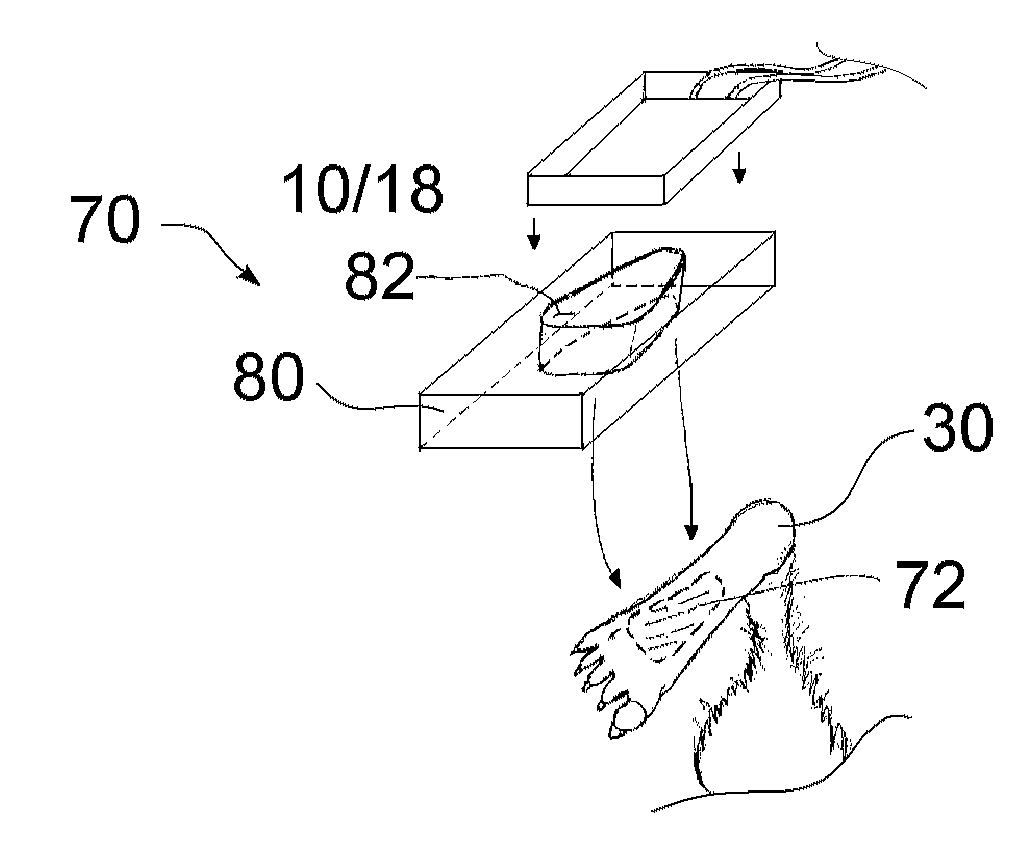Medical Devices and Techniques for Rodent and Small Mammalian Based Research
a technology for medical devices and small mammals, applied in the field of medical devices and techniques for rodents and small mammals based research, can solve the problems of unduly waste of materials by researchers in the development of specialized tools, the need for considerable time for research tools, and the inability to meet the needs of patients, etc., to achieve simple restricting adapters, excellent results, and reduce the effective area of emitters and detectors
- Summary
- Abstract
- Description
- Claims
- Application Information
AI Technical Summary
Benefits of technology
Problems solved by technology
Method used
Image
Examples
Embodiment Construction
[0041]FIG. 4 is a schematic of the organizational arrangement for method of supplying rodents, such as mice, to separate independent medical and other researchers 50 according to the present invention. The present invention will provide pre-installed and / or embedded physiologic sensors onto or within the rodents to the researchers 50. The key aspect of this portion of the invention is removing the design and implementation of the specific modified rodents from the individual researchers 50. The design step including selecting the appropriate sensors, locating and / or adapting them for use on the subject small rodents, developing the manufacturing techniques, the sterilization techniques, the validation techniques and all of the associated hardware and software needed. A single organization 60 will design a wide variety of modified rodents 62. Each style of rodent 62 will essentially be a rodent with a given physiologic sensor 64, or set of sensors 64 associated therewith. The implant...
PUM
 Login to View More
Login to View More Abstract
Description
Claims
Application Information
 Login to View More
Login to View More - R&D
- Intellectual Property
- Life Sciences
- Materials
- Tech Scout
- Unparalleled Data Quality
- Higher Quality Content
- 60% Fewer Hallucinations
Browse by: Latest US Patents, China's latest patents, Technical Efficacy Thesaurus, Application Domain, Technology Topic, Popular Technical Reports.
© 2025 PatSnap. All rights reserved.Legal|Privacy policy|Modern Slavery Act Transparency Statement|Sitemap|About US| Contact US: help@patsnap.com



